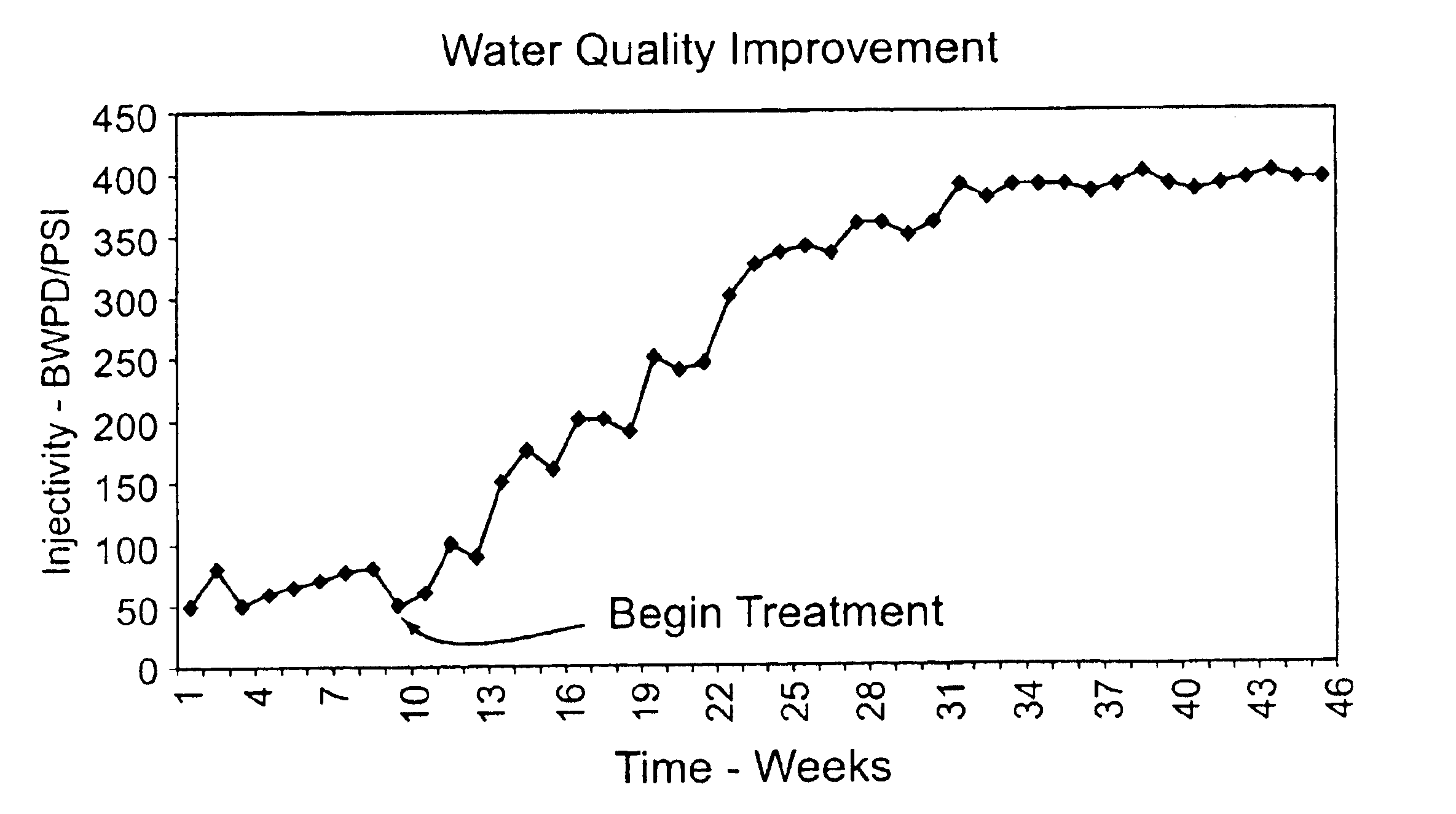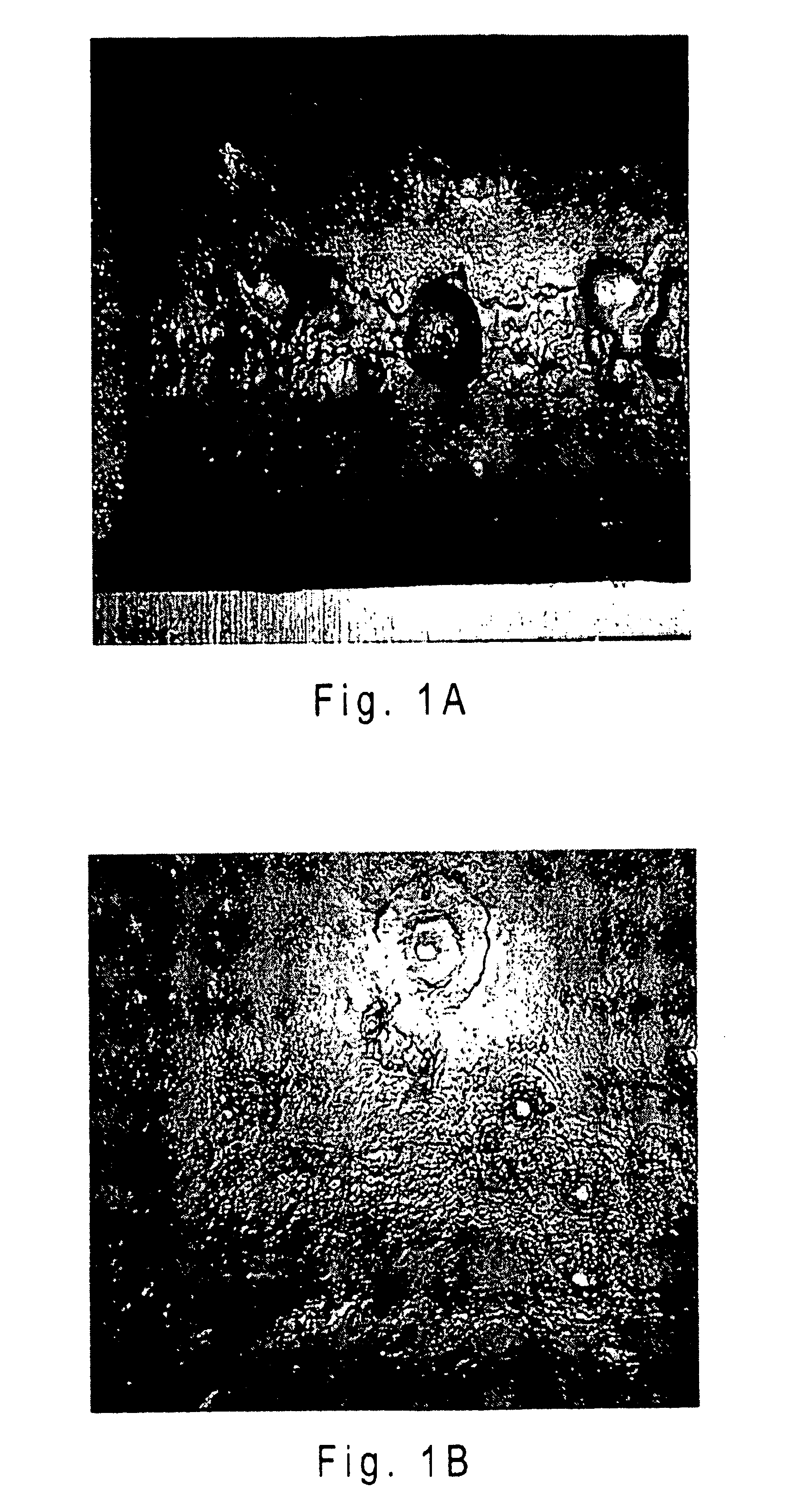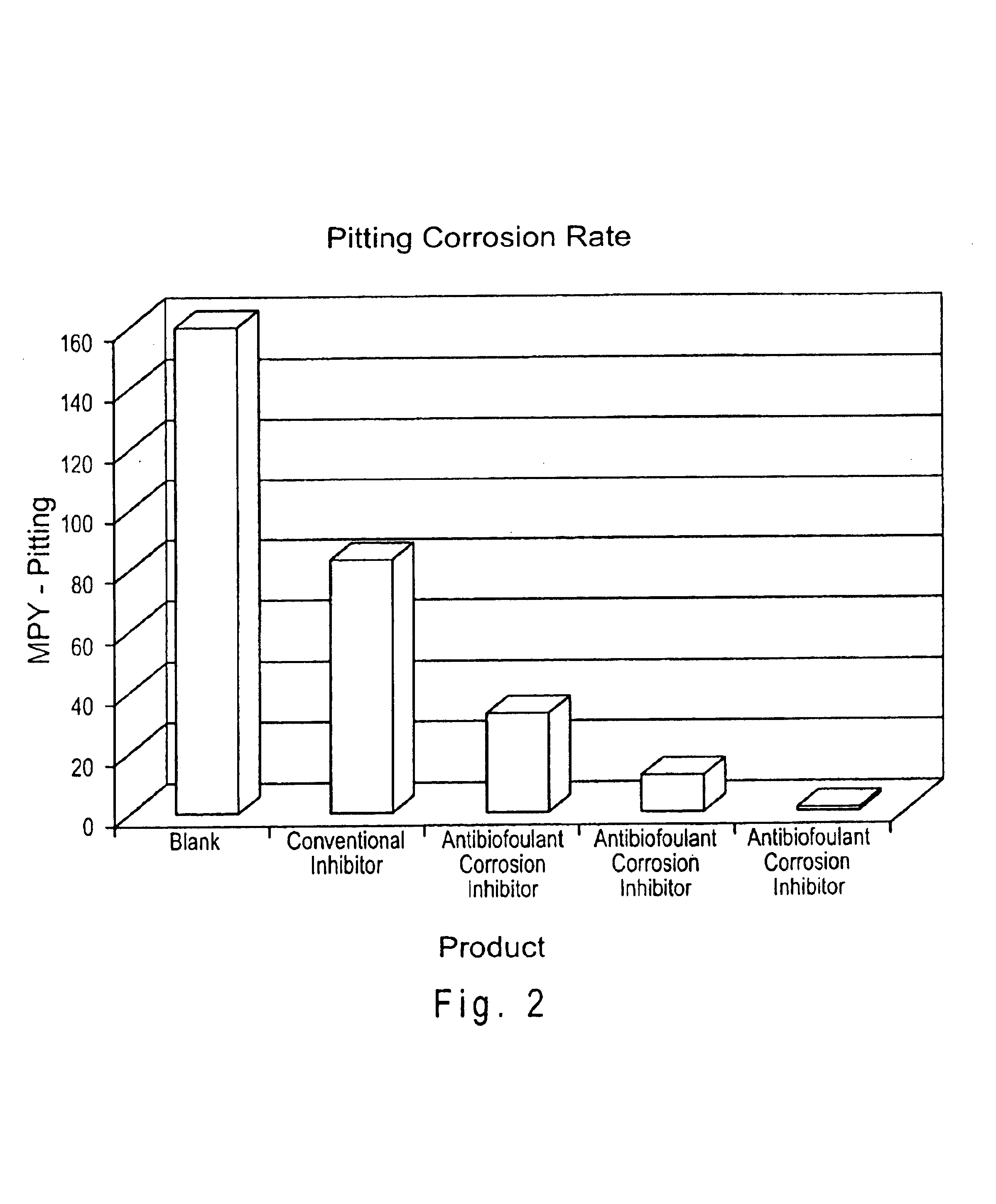Corrosion inhibitors and methods of use
a corrosion inhibitor and corrosion technology, applied in the field of corrosion inhibitors, can solve the problems of difficult diagnosis and even more difficult control, corrosion inhibitors are not as effective against corrosion of iron and ferrous base materials, and oil field fluids that contact air can become many times more corrosive,
- Summary
- Abstract
- Description
- Claims
- Application Information
AI Technical Summary
Benefits of technology
Problems solved by technology
Method used
Image
Examples
example 1
Oil-soluble, Water-Dispersible Corrosion Inhibitor Composition
This anti-biofoulant corrosion inhibitor is a concentrated, oil-soluble, water-dispersible filming type corrosion inhibitor and is formulated with a dispersant package that penetrates, wets, and flushes solids from the system. The inhibitor film is very tenacious, persistent and resists adhesion of most solids including iron sulfide, mineral scales, and sessile bacteria. The inhibitor is used to control corrosion caused by carbon dioxide and hydrogen sulfide. Further it reduces the occurrence of under-deposit corrosion by maintaining a clean, solids-free system. The inhibitor is designed for batch or continuous treatment of downhole or flow line applications in wells that produce oil and water.
Treatments are usually initiated with an application of a surfactant to clean heavy deposits of solids residue, iron sulfide and biofilm. Application of an EPA Registered biocide may be necessary to sterilize the system. The biocide...
example 2
Water-soluble Anti-Biofoulant Surfactant
A water-soluble anti-biofoulant surfactant is a formulated surfactant with strong penetrating properties to loosen, wet, condition and disperse masses of solids found in fouled systems. This surfactant is used to penetrate, loosen and disperse masses of iron sulfide, corrosion by-products and biofilm found in fouled systems. The cleaning action conditions the system for laying a good inhibitor film and helping biocide treatments reach areas under deposits. The surfactant is designed for batch or continuous treatment of downhole and flow line producing applications that are fouled with iron sulfide, corrosion by-products, and biofilm. Treatments are usually applied at a rate of 100 ppm until the system begins to show signs of clean-up. As the solids are penetrated and removed, application of an approved EPA Registered biocide is used to sterilize the system. An anti-biofoulant corrosion inhibitor is then applied to deliver strong surfactancy as...
example 3
Water-soluble Oil-dispersible Corrosion Inhibitor Composition
A typical water-soluble, oil-dispersible filming type anti-biofoulant corrosion inhibitor is formulated with a dispersant package that penetrates, wets, and flushes solids from the system. The inhibitor film is very tenacious, persistent and resists adhesion of most solids including iron sulfide, mineral scales, and sessile bacteria. The inhibitor is used to control corrosion caused by carbon dioxide and hydrogen sulfide. Further it can reduce the occurrence of under-deposit corrosion by maintaining a clean, solids-free system. The inhibitor is designed for continuous treatment of downhole or flow line producing applications that are high water cut and for water injection systems. This inhibitor has shown excellent results in gas flow systems with elevated velocities. Because of the high film persistency, batch treatments are also applicable. Treatments are usually initiated with an application of an anti-biofoulant surfac...
PUM
| Property | Measurement | Unit |
|---|---|---|
| Percent by mass | aaaaa | aaaaa |
| Percent by mass | aaaaa | aaaaa |
| Percent by mass | aaaaa | aaaaa |
Abstract
Description
Claims
Application Information
 Login to View More
Login to View More - R&D
- Intellectual Property
- Life Sciences
- Materials
- Tech Scout
- Unparalleled Data Quality
- Higher Quality Content
- 60% Fewer Hallucinations
Browse by: Latest US Patents, China's latest patents, Technical Efficacy Thesaurus, Application Domain, Technology Topic, Popular Technical Reports.
© 2025 PatSnap. All rights reserved.Legal|Privacy policy|Modern Slavery Act Transparency Statement|Sitemap|About US| Contact US: help@patsnap.com



